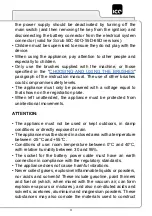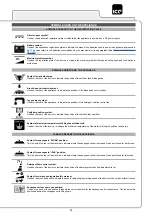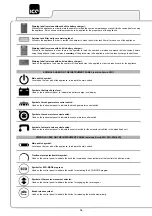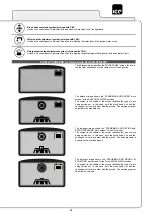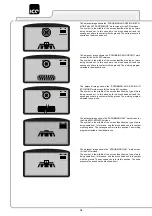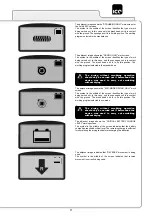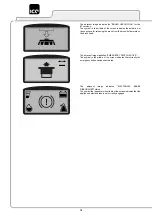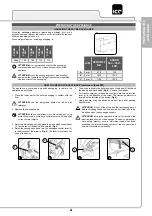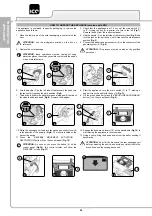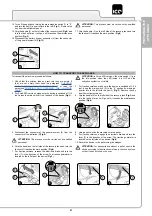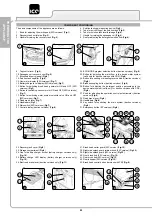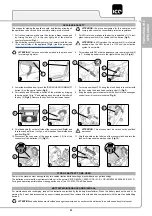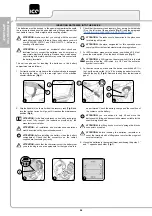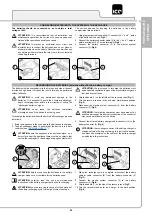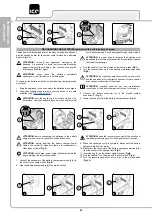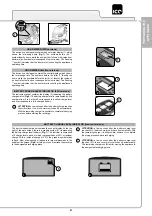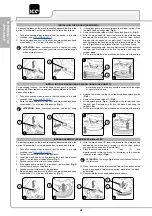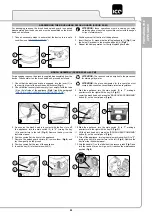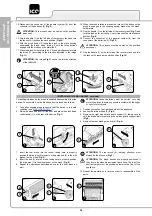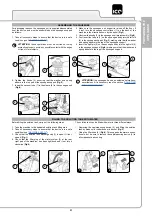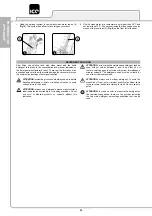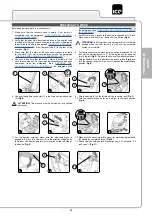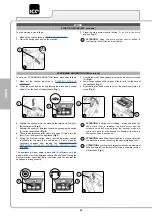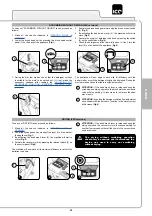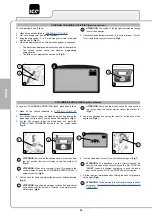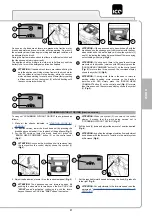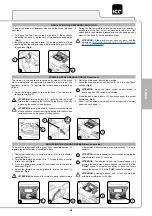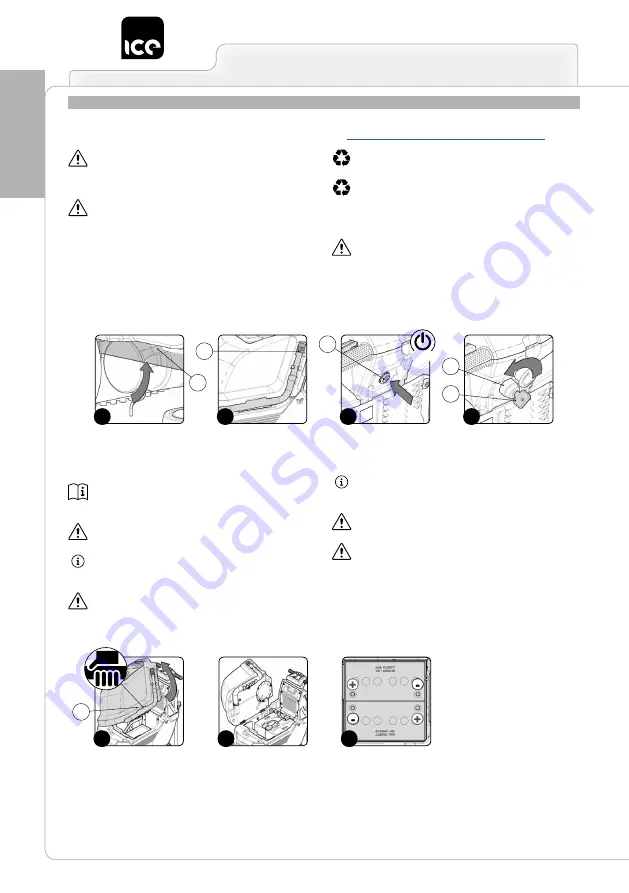
24
PREP
ARING THE
APPLIANCE
5. Grip the handle (6) on the left side of the recovery tank (
Fig.5
) and
turn the tank as far as it will go, until it reaches the maintenance
position (
Fig.6
).
ATTENTION:
for battery maintenance and daily recharging,
you must fully respect the indications provided by the
manufacturer or retailer.
ATTENTION:
all installation and maintenance operations
must be carried out by specialised personnel.
ATTENTION:
before installing the battery, clean the battery
compartment. Check that the connectors on the cables
supplied are functioning correctly.
ATTENTION:
check that the characteristics of the battery that
you are looking to use are appropriate for the type of work to
be performed. Check the battery charge and the condition of
the contacts on the battery.
ATTENTION:
you are advised to only lift and move the
batteries with lifting and transportation means suitable for the
specific weight and size
ATTENTION:
the lifting hooks must not damage the blocks,
connectors or cables.
ATTENTION:
before inserting the batteries, remember to
cover the terminals with a little grease to protect them against
external corrosion.
6. House the batteries in the compartment, positioning the poles “+”
and “-“ opposite each other (
Fig.7
).
INSERTING BATTERIES INTO THE DEVICE
The batteries must be housed in the special compartment beneath
the recovery tank and should be handled using lifting equipment that
is suitable in terms of both weight and its coupling system.
ATTENTION:
make sure that you comply with the accident
prevention regulations in force in the country where you work
or with DIN EN 50272-3 and DIN EN 50110-1, before any
handling of the batteries.
ATTENTION:
to prevent an accidental short circuit use
insulated tools to connect the batteries, and do not place or
drop metal objects on the battery. Remove rings, watches and
any clothing with metal parts that may come into contact with
the battery terminals.
The various phases for inserting the batteries in the battery
compartment are as follows:
1. For traction versions, make sure the electronic brake is engaged
by turning the lever (1) in the rear right part of the machine
counter-clockwise (
Fig.1
).
2. Check that the recovery tank is empty, if not, empty it with the tube
(2) on the left side of the appliance (
Fig.2
) (read the paragraph
CHECKING AND CLEANING THE RECOVERY TANK
ATTENTION:
The tanks should be emptied in the place used
for draining dirty water.
ATTENTION:
the place designated for this operation must
comply with current environmental protection regulations.
3. For 50D versions, make sure the device is switched off. If it isn't,
press the main switch (3) on the back of the device (
Fig.3
).
ATTENTION:
in 50D versions, the main switch (3) is in the idle
position when the LED inside it is OFF and the activation
symbol is not visible.
4. For traction versions, make sure the device is switched off. If it
isn't, set the main switch (4) to “0” by making a quarter turn to the
left with the key (5) (
Fig.4
). Remove the key from the instrument
panel.
7
6
5
1
2
1
2
6
5
3
4
3
4
OFF


